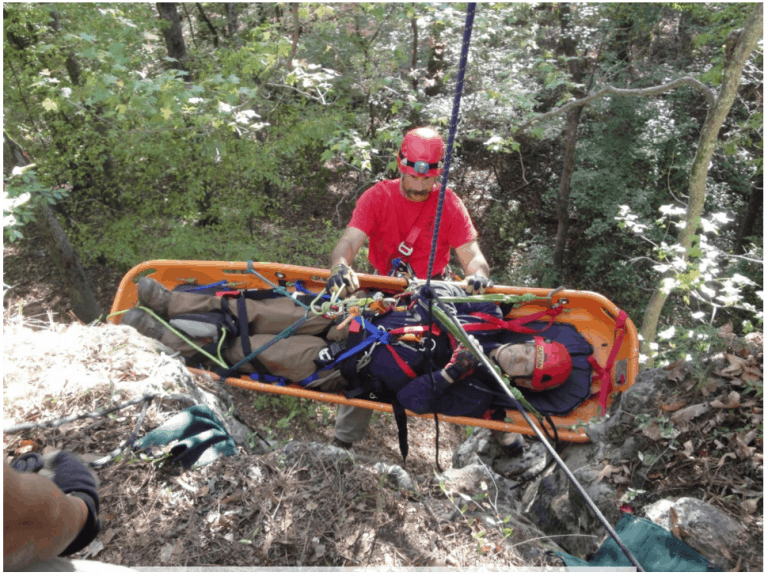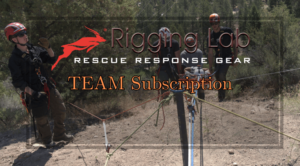Training for Wildland Fire and REMS: Essential Skills for Rapid Extraction Teams
The Role of REMS in Wildland Firefighting
Rapid Extraction Module Support (REMS) teams are a critical safety component in wildland firefighting. These specialized units provide rapid medical response and extraction for injured or incapacitated firefighters operating in hazardous, remote, and unpredictable environments.
Purpose and Function of REMS
REMS teams serve as pre-staged rescue units assigned to wildland fire incidents. Their mission is to:
- Ensure a safe and efficient evacuation for injured or ill firefighters
- Conduct rapid extraction and medical care in remote terrain
- Operate in extreme conditions where conventional evacuation methods are impractical
These teams act as a safety net in an environment where rough terrain, heavy smoke, and limited access can make standard rescue efforts nearly impossible.
REMS Team Composition and Required Training
A well-trained REMS unit is composed of highly skilled professionals with diverse expertise:
- Emergency Medical Responders (EMRs), EMTs, and Paramedics trained in both prehospital care and wildland rescue
- Certified wildland firefighters who understand fire behavior and can safely operate on the fire line
- Technical rescue specialists with expertise in rope rescue, vehicle extrication, and swiftwater rescue
Training and Certification for REMS Teams
To qualify for a REMS unit, members must complete rigorous training, including:
- Wildland Fire Training Courses: S-130/S-190 (Basic Wildland Firefighter), L-180 (Human Factors), S-131 (Squad Boss)
- Fire Shelter Training: Proper deployment and survival strategies
- Physical Fitness Standards: Pack Test (3-mile hike with a 45-pound pack in under 45 minutes)
- Technical Rescue Certifications: Rope rescue, steep-angle and highline systems, and vehicle extrication training
Ongoing training is mandatory, with annual refresher courses like RT-130 Wildland Fire Safety Training ensuring readiness for deployment.
Essential Equipment and Capabilities of REMS Teams
Because REMS operates in rugged, remote, and high-risk environments, their equipment must be lightweight, durable, and highly functional:
- Technical Rescue Gear – Compact rope systems, harnesses, and extraction tools
- Medical Kits – Advanced field treatment supplies for trauma care
- Utility Terrain Vehicles (UTVs) – Modified for wilderness patient transport
- High-Angle and Steep Terrain Rescue Systems – Essential for extrication in mountainous regions
- Swiftwater Rescue Equipment – For fire areas near rivers or flood zones
This specialized equipment allows REMS teams to rapidly respond to a wide range of emergencies in the wildland fire environment.
How REMS Integrates with Wildland Fire Operations
REMS teams function within the Incident Command System (ICS), ensuring seamless coordination with firefighting and emergency response teams.
- Deployed under the Medical Branch of incident command
- Work directly on the fire line alongside suppression crews
- Coordinate with helicopter and ground transport units for rapid patient evacuation
By embedding within the firefighting structure, REMS teams ensure faster emergency response, reducing extraction times and increasing survival rates for injured personnel.
The Impact of REMS on Firefighter Safety
The implementation of REMS has significantly improved firefighter safety in wildland operations. Compared to conventional rescue methods, REMS teams:
- Reduce extraction times by up to 75 percent, ensuring faster medical intervention
- Improve survival outcomes through immediate on-scene treatment
- Enhance overall fireground safety, providing peace of mind for firefighting crews
As wildfire seasons become longer and more intense, the need for highly trained REMS teams continues to grow. Their expertise in technical rescue, medical care, and fireground integration makes them an indispensable component of modern wildland firefighting.
Final Thoughts
Wildland firefighting is one of the most dangerous professions, and REMS teams serve as the critical link between injury and survival. Their specialized training, rapid response capabilities, and integration within incident command systems make them a vital asset in protecting those on the front lines.
For those interested in REMS training, starting with wildland firefighter certifications and advancing technical rescue skills is the best path toward joining these elite teams.
Peace on your Days
Lance










